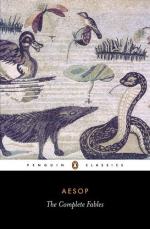|
This section contains 7,172 words (approx. 24 pages at 300 words per page) |

|
SOURCE: "Medieval Beasts and Modern Cages: The Making of Meaning in Fables and Bestiaries," in PMLA, Vol. 97, No. 1, January 1982, pp. 40-49.
In the following essay, Henderson examines ways in which medieval fabulists freely modified Aesopic fables—sometimes adding elaborate morals to suit their needs—and looks critically at the rigidity of modern techniques for finding meaning in medieval works.
Not long ago, we were told that a poem should not mean but be. No one told the medieval author. He—or she—blithely layered meaning upon meaning. Noticing this difference -between then and now, we have made meaning—the original meaning and the original reader'sprocess of getting at it—the central issue in most modern criticism of medieval literature. How are meanings wrapped up in a text? How did the original audience know what was there? Were some meanings hidden? We, certainly, have found many hidden meanings: historical...
|
This section contains 7,172 words (approx. 24 pages at 300 words per page) |

|


